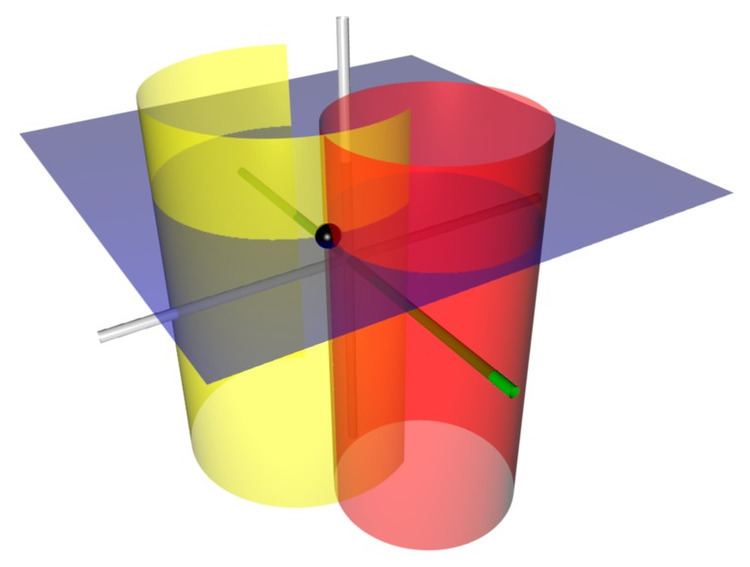 | ||
Bipolar cylindrical coordinates are a three-dimensional orthogonal coordinate system that results from projecting the two-dimensional bipolar coordinate system in the perpendicular
Contents
The term "bipolar" is often used to describe other curves having two singular points (foci), such as ellipses, hyperbolas, and Cassini ovals. However, the term bipolar coordinates is never used to describe coordinates associated with those curves, e.g., elliptic coordinates.
Basic definition
The most common definition of bipolar cylindrical coordinates
where the
(Recall that the focal lines
Surfaces of constant
that all pass through the focal lines and are not concentric. The surfaces of constant
that surround the focal lines but again are not concentric. The focal lines and all these cylinders are parallel to the
Scale factors
The scale factors for the bipolar coordinates
whereas the remaining scale factor
and the Laplacian is given by
Other differential operators such as
Applications
The classic applications of bipolar coordinates are in solving partial differential equations, e.g., Laplace's equation or the Helmholtz equation, for which bipolar coordinates allow a separation of variables (in 2D). A typical example would be the electric field surrounding two parallel cylindrical conductors.
